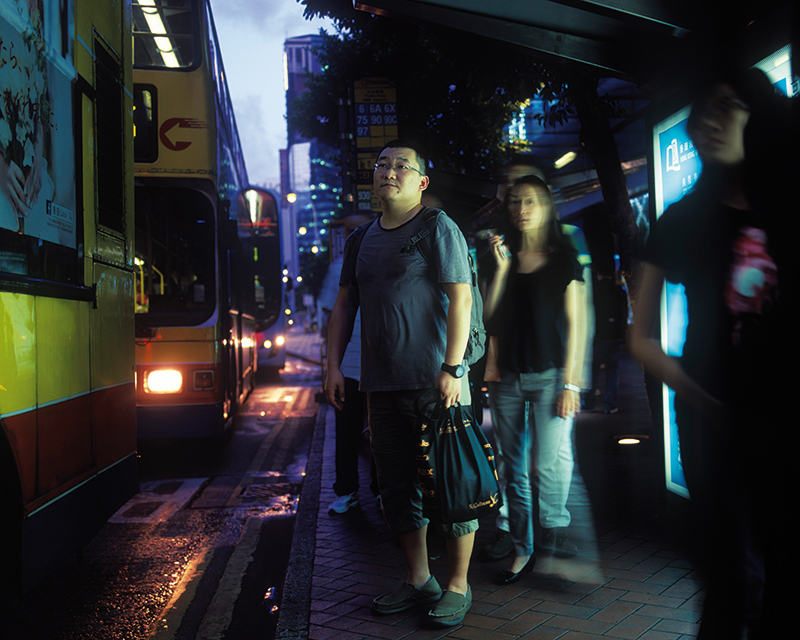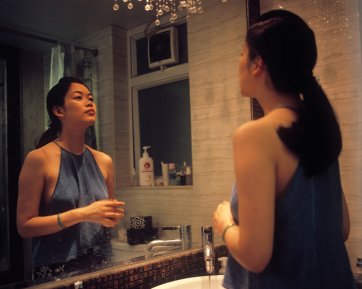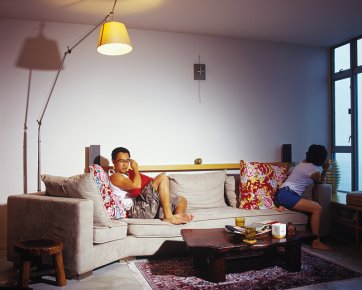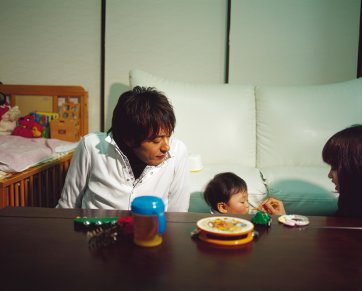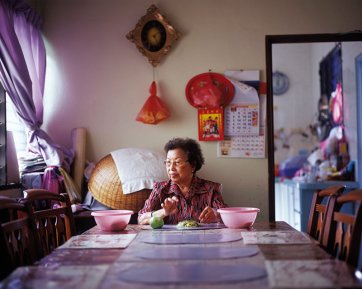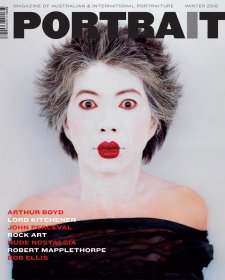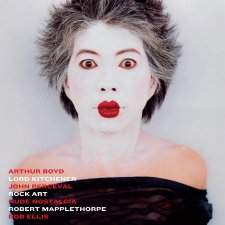Untitled from The Other Shore 2014-15, by Wei Leng Tay
For three weeks in March, Singaporean photographer Wei Leng Tay was a visiting artist at the Australian National University’s School of Art. Tay’s exhibition, The Other Shore, is showing at the ANU’s Australian Centre on China in the World until late July 2016, and focuses on young mainland Chinese migrants in Hong Kong. A day after the opening, Tay discussed the development of her practice with the exhibition’s curator, Olivier Krischer.
wei leng tay: I work mainly with photography and sound. When I say sound, it’s sound from interviews and conversations that I have had with people. The photography is shown as prints, lightboxes or projections. I’ve also done stand-alone sound installations. Most of my work is in places that are familiar to or important to people’s lives, or part of their
routine – a place that would have
some significance to them.
wlt: Hong Kong Living is the first project I started working on in 2005. I moved to Hong Kong in 2000; I was working in journalism back then. I started doing my own work because I was feeling a bit frustrated. Work was really hectic, and I wanted to figure out how it was for other people, living in Hong Kong, dealing with the spaces, the economics, everything – just being there – and how it affected people’s relationships. It was about the stresses of living in that kind of city. It’s really expensive and hectic. How do people balance all of that?
That’s how it started, but as it progressed I started thinking more about myself. Living away from home, you start thinking – as you get older too – about obligations to your family. Hong Kong Living really was all about that, about my relationship with my family, or expectations people have of someone – of a thirty-seven year old Chinese woman – what you’re supposed to be doing right now, at this age.
I think family and relationships run through all my projects. When I started doing this project I wanted to photograph in people’s homes, because I think Hong Kong is so much about that veneer and how you project yourself. I wanted to see how other people were living. When people are at home they almost act differently – you’re a lot more comfortable; your guard is down. It’s a much better way
of working with people.
1 Untitled from The Other Shore 2014-15, by Wei Leng Tay. 2 Tanny and Candy 2006 from Hong Kong Living 2005–15, by Wei Leng Tay. 3 Where do we go from here? from Impressions of Japan 2009, by Wei Leng Tay.
[Referring to Tanny and Candy]:
he is my insurance agent {laughs}; this is actually a way in which I’ve continued working – I find people through people I know, because a lot of things we talk about are very personal, so there’s a certain level of trust for people to want to be a part
of the project.
[For exhibitions], I always separate what is said [ie – my sound recordings] from the actual person, because I don’t think it’s necessary. I guess the sound helps contextualise people, but I really like people to look at photographs for what they are, as opposed to reading a caption or listening to something that will tell you about it, because the photograph does something else.
1 Eldest Aunt 2010 from Convergence 2009-10, by Wei Leng Tay. 2 Untitled from The Other Shore 2014-15, by Wei Leng Tay. 3 Untitled from The Other Shore 2014-15, by Wei Leng Tay.
